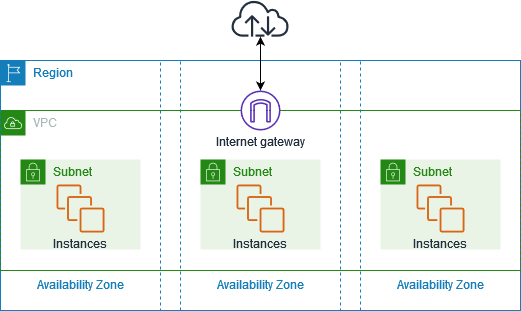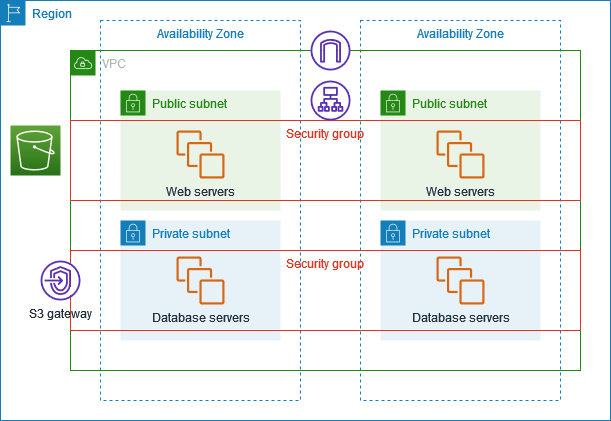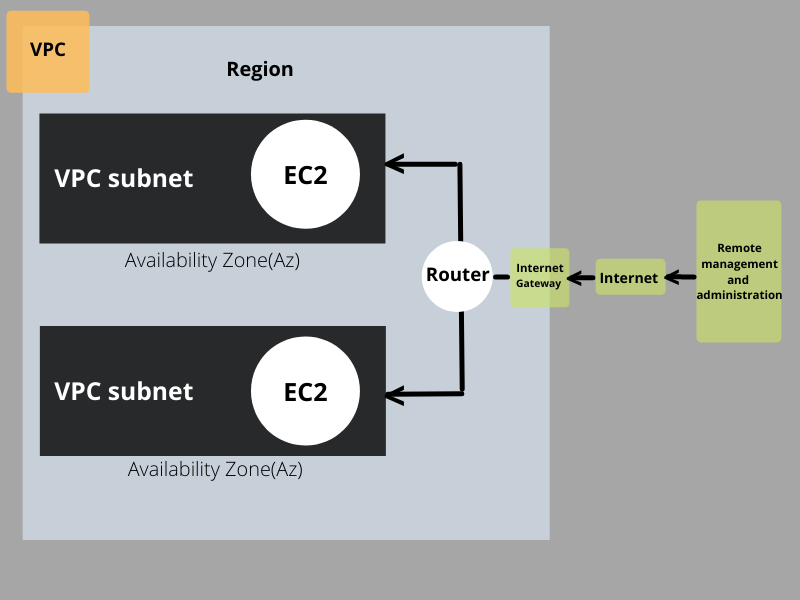What is Amazon Virtual Private Cloud (VPC)?
 Shashank Vimal
Shashank Vimal
Understanding VPC
What is a VPC? A Virtual Private Cloud (VPC) is a virtual network that you create in the cloud. It provides you with your own private section of the internet, allowing you to run your applications and store your data securely and in isolation. Think of it as having your own personal network within the larger cloud environment.
Importance of VPC A VPC is essential for controlling your cloud resources with a high degree of security and flexibility. You can create and manage various resources such as servers, databases, and storage within your VPC, ensuring they are isolated from other users' networks. This isolation protects your data and applications from unauthorized access.

Key Components of a VPC
IP Address Range When you create a VPC, you define an IP address range for it. This range determines the private IP addresses that your resources within the VPC will use. You can further divide this range into smaller subnetworks, called subnets, to organize your resources and control their communication.
Subnets Subnets are smaller sections within your VPC, created by dividing the IP address range. They help you manage and group your resources logically. For example, you might create separate subnets for different types of applications or services, ensuring that they are organized and can communicate effectively.
Gateways and Routers To connect your VPC to the internet or other networks, you need gateways or routers. These serve as entry and exit points for traffic going in and out of your VPC. With gateways and routers, you can control the flow of traffic and implement security measures to protect your resources from external threats.
Security and Control in VPC
Access Rules With a VPC, you have complete control over your network environment. You can define access rules to regulate who can access your resources and how they can communicate. This includes setting up firewalls and configuring security groups to enforce your security policies.
Firewalls and Security Groups Firewalls act as barriers to prevent unauthorized access to your VPC. You can configure firewall rules to allow or deny specific types of traffic based on criteria such as IP address, port, or protocol. Security groups are another layer of protection, allowing you to specify which resources within your VPC can communicate with each other and with the outside world.
Default and Custom VPCs
Default VPC By default, when you create an AWS account, AWS provides a default VPC for you. This default VPC is designed to help you get started with AWS quickly and easily. It comes pre-configured with basic settings that are suitable for many common use cases.
Custom VPC For more specific requirements and advanced configurations, you should create custom VPCs tailored to your applications or projects. A custom VPC allows you to define your own IP address ranges, subnets, gateways, and security settings, providing greater control and flexibility over your cloud environment.
Benefits of Using a VPC
Security A VPC offers a high level of security by isolating your resources from other users' networks. This isolation ensures that your data and applications are protected from unauthorized access and potential threats.
Flexibility With a VPC, you can create and manage your cloud resources according to your specific needs. You have the flexibility to configure IP address ranges, subnets, gateways, and security settings to suit your applications and workflows.
Scalability A VPC allows you to scale your infrastructure dynamically as your needs change. You can easily add or remove resources, expand your subnets, and adjust your security settings to accommodate growth and changing requirements.
Cost Efficiency By optimizing your VPC configuration and leveraging features like AWS Graviton-based instances and Amazon EC2 Spot instances, you can achieve cost savings while maintaining high performance and reliability.
VPC Components

1. Virtual Private Clouds (VPC)
Overview: A VPC is a virtual network in the cloud that closely resembles a traditional network you’d operate in your own data center.
Function: After creating a VPC, you can add subnets to organize your resources.
2. Subnets
Definition: A subnet is a range of IP addresses within your VPC.
Location: Each subnet resides in a single Availability Zone.
Deployment: Once subnets are added, you can deploy AWS resources within your VPC.
3. IP Addressing
Assignment: Assign both IPv4 and IPv6 addresses to your VPCs and subnets.
Customization: Bring your public IPv4 and IPv6 GUA addresses to AWS and allocate them to resources like EC2 instances, NAT gateways, and Network Load Balancers.
4. Network Access Control List (NACL)
Function: A NACL is a stateless firewall controlling inbound and outbound traffic at the subnet level.
Rules: It operates at the IP address level and allows or denies traffic based on rules you define.
Security: Provides an additional layer of network security for your VPC.
5. Security Group
Overview: Acts as a virtual firewall for instances (e.g., EC2 instances) within a VPC.
Control: Manages inbound and outbound traffic at the instance level.
Rules: Define rules to permit or restrict traffic based on protocols, ports, and IP addresses.
6. Routing
- Purpose: Use route tables to determine where network traffic from your subnet or gateway is directed.
7. Gateways and Endpoints
Internet Gateway: Connect your VPC to the internet.
VPC Endpoint: Connect to AWS services privately, without using an internet gateway or NAT device.
8. Peering Connections
Function: Route traffic between resources in two VPCs using a VPC peering connection.

9. Traffic Mirroring
- Purpose: Copy network traffic from network interfaces and send it to security and monitoring appliances for deep packet inspection.
10. Transit Gateways
- Function: A central hub to route traffic between your VPCs, VPN connections, and AWS Direct Connect connections.
11. VPC Flow Logs
- Description: Capture information about the IP traffic going to and from network interfaces in your VPC.
12. VPN Connections
Use Case: Connect your VPCs to your on-premises networks using AWS Virtual Private Network (AWS VPN).
READ MORE - https://docs.aws.amazon.com/vpc/latest/userguide/vpc-example-private-subnets-nat.html
THANK YOU FOR READING.
Subscribe to my newsletter
Read articles from Shashank Vimal directly inside your inbox. Subscribe to the newsletter, and don't miss out.
Written by

Shashank Vimal
Shashank Vimal
An individual who uses AI prompts, stack overflow threads and coffee to assemble software that occasionally works as expected...